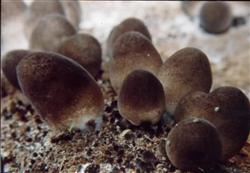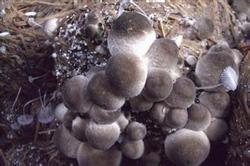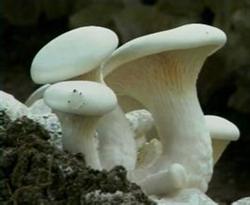Off-season cultivation of volvariella volvacea in winter

Volvariella volvacea belongs to high temperature and high humidity type fungi, which is suitable to grow in constant temperature and humidity environment. The out-of-season cultivation of straw mushroom has higher economic benefits in the greenhouse with good heat preservation capacity in winter. The proportions of cotton seed hull 68%, rice straw 20%, urea 1%, lime 6%, calcium carbonate 3%, plant ash 2%, or waste cotton 77%, rice straw 10%, wheat bran 5%, lime 8%. By using the method of secondary fermentation, the cottonseed shell was exposed for 3 days for 4 days, the water content was adjusted to 70% 75% and the pH value was 7% 8 with lime water, and stored outdoors for 3 days, then the culture material was moved indoors and the material temperature was kept at 70 ℃ for 10 hours. After the fermentation of the suitable sowing medium, the water content was adjusted to 65%, the pH value was 9, and the material temperature was reduced to 35 ℃. Using the strip spreading method, the 80 cm wide border is divided into 5 strips, each 16 cm wide, the middle strip is filled with fertilizer soil, and the culture material is filled on both sides, 10 kg per square meter is used. After laying, the bacteria are slightly compacted, and the bacteria are scattered on the material surface. The amount of seed is 4% 6% of the material weight, then sprinkle a layer of culture material on the bacteria, and cover the outside of the two culture materials with 5 cm 6 cm fertilizer soil. The mushroom shed was closed after sowing, and the temperature was kept at 30 ℃ ~ 35 ℃. The doors and windows were not opened for 3 days to maintain the environment of high temperature and humidity to facilitate mycelium germination. After 20-30 minutes of ventilation every day, a small amount of water was sprayed after 4-5 days to promote mycelium growth. Six days later, when the mycelium was full of culture material, sufficient water was supplied, ventilation and light transmission were strengthened, and the formation of fruiting body was promoted. When the hyphae began to kink and show buds after 8 days, the watering should be controlled to keep the material surface dry so as to increase mushroom formation and reduce dead mushrooms. During the mushroom emergence period, strengthen ventilation during the formation of mushroom buds to remove exhaust gas and regulate room temperature, keep room temperature at 32-34 ℃, air relative humidity at 85%-90%, reduce the amount of water spraying, and increase the number of water spraying. The first tidal mushroom was harvested 13-15 days after sowing, and the output accounted for 60% and 70% of the total output. Clean the material surface in time after each tide mushroom harvest, spray water to moisturize under the premise of keeping the temperature of the mushroom room basically stable, adjust the pH value to alkaline, and promote the growth of mycelium. When replenishing water, 0.1% urea solution and other fertilizer solution can be applied to promote the development of fruiting body. The second tide of mushrooms was harvested 7 days later.
- Prev

Five elements of High-yield cultivation of volvariella volvacea
First, reasonably arrange the production season of straw mushroom is a high-temperature edible fungus. In order to make volvariella volvacea grow normally after sowing, the cultivation season should be carried out at a daily average temperature of more than 25 ℃. This is conducive to the growth of mycelium and the development of fruiting body, those with plastic greenhouse can be sown in advance to mid-May, and there are greenhouses.
- Next

Master the key technology of Pleurotus ostreatus and let it produce more mushrooms in spring.
Pleurotus ostreatus is a rare edible mushroom developed in recent years. It has excellent quality, good commercial quality, high economic and nutritional value, and broad market prospects. At present, it is mainly cultivated with cottonseed shell as the main material, but it is difficult to develop Pleurotus ostreatus in non-cotton area. Through the experiment, the author found that it is feasible to cultivate Pleurotus ostreatus with the whole plant of corn.
Related
- Fuxing push coffee new agricultural production and marketing class: lack of small-scale processing plants
- Jujube rice field leisure farm deep ploughing Yilan for five years to create a space for organic food and play
- Nongyu Farm-A trial of organic papaya for brave women with advanced technology
- Four points for attention in the prevention and control of diseases and insect pests of edible fungi
- How to add nutrient solution to Edible Fungi
- Is there any good way to control edible fungus mites?
- Open Inoculation Technology of Edible Fungi
- Is there any clever way to use fertilizer for edible fungus in winter?
- What agents are used to kill the pathogens of edible fungi in the mushroom shed?
- Rapid drying of Edible Fungi

